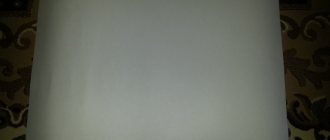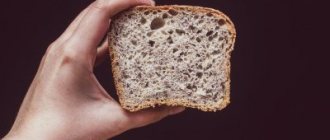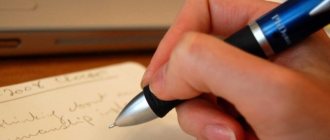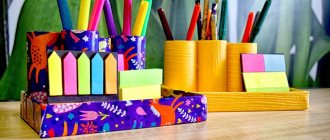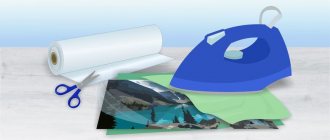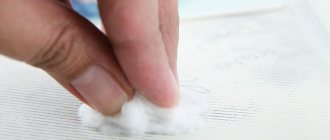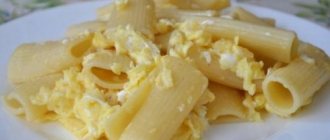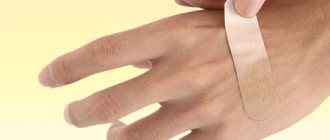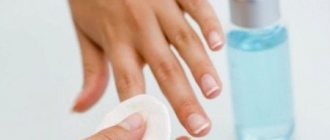Adhesive that gets on the surface can be a serious problem. It not only worsens the appearance of the product, but can also lead to its damage.
Dealing with a sticky stain can be difficult, since some compositions are highly durable and cannot be affected by weak detergents.
Read the article about how to remove different types of glue from different surfaces.
Universal compositions for removing adhesive traces at home
Regardless of the type of glue, there are universal products that can handle any stain. These include:
- Plain water . It can dissolve almost any glue if you act quickly. With its help you can get rid of stationery, latex, vegetable, carpentry, wallpaper and PVA glue. The principle of removal is simple: the stained area is washed until there are no stains left on it.
Alcohol. It handles most adhesives. Alcohol dissolves even those glue molecules that have managed to firmly adhere to the surface. It is applied to cotton wool or a sponge, which is used to wipe the stain until it disappears completely. If necessary, the material can be left on the stain in the form of a compress.- Acetone. It is one of the popular solvents, as it can handle even difficult stains. To remove the adhesive composition, soak a cotton pad in acetone and use it to treat the surface until completely clean.
- Vegetable oil . The fat base makes the glue more pliable and makes it easier to remove it from the surface. To clean, use a cotton pad soaked in oil and rub the stain until it disappears completely. If the glue is persistent, then you will need to make some effort, but the oil can deal with sticker marks in no time.
- Solvents: gasoline, white spirit, turpentine, solvent 646, R-4, RS-2, etc. These caustic compounds allow you to remove different types of glue without leaving a trace. They are used to combat stubborn stains, for example, from silicate glue, Titanium, liquid nails and more.
Alcohol, vegetable oils and water are safe adhesive removers and can be used on most materials.
Acetone and solvents are used with caution, as they can damage some surfaces, such as upholstery or paper.
Stage 1
Fill a bowl or sink with hot water, add a little dishwashing detergent (until foam forms) and put things there to “soak.” After a few minutes, take them out and wipe them dry. You will find that part of the problem has already been solved. But not all of it.
Features of removing stains from different surfaces
Depending on the type of surface on which the glue was applied, the methods for cleaning it differ:
- Plastic should not be exposed to heat. It may melt when exposed to high temperatures.
- glass with sandpaper or any sharp objects. Scratches that appear not only worsen the appearance of the product, but can also cause its destruction.
- Clothes are not treated with caustic compounds. This applies to any aggressive solvents.
- Wood is resistant to both mechanical and chemical cleaning, but varnished surfaces are not treated with liquids containing acetone.
- Bottles after processing are used for storing food products. Therefore, it is necessary to remove any cleaning agent residues from them especially carefully, or use vinegar, soda or oil for this purpose.
- Wallpaper is afraid of prolonged contact with liquid substances.
- Leather shoes are sensitive to any impact. Therefore, you can get rid of glue stains with a limited set of means: vegetable oil, warm water or freezing.
- Tiles, like metal , should not be cleaned with sharp objects, so as not to spoil its appearance.
- Human skin is sensitive to various aggressive substances. Therefore, to remove traces of glue, it is better to use a warm soapy solution or vegetable oil.
- Linoleum can fade under the influence of solvents, and sharp objects leave deep scratches on it.
How to remove stickers from books
Peeling off a sticker without leaving a trace at home is quite simple. To ensure that the label sticks tightly and does not come off, manufacturers use strong adhesive.
Removing it is quite difficult; you will need auxiliary materials and chemicals. A few simple remedies:
- Chemical solvent for paints and varnishes. The plastic is immersed in the solvent for 5-7 minutes. During this time, the adhesive base will completely soften and will not be sticky. Residues are removed with a plastic scraper. The procedure should be carried out with gloves, and upon completion, wash your hands thoroughly.
- Ethyl and medical alcohol. At the pharmacy you buy a solvent of 92 or 96%. It perfectly “removes” glue residues from plastic. To do this, dampen a clean rag and wipe the stain. After some time, the adhesive base curls up and dissolves. Residues are removed with a new, clean rag or washcloth.
- Acetone or nail polish remover. The solvent is applied using a small piece of cloth. Wait a few minutes until the label gets wet and remove it.
- Vegetable oil. Place an item with a sticker in the container with the product and wait 12-15 minutes. The base is impregnated with vegetable fats, after which it is easy to remove with a blade.
- Paste. Add a small amount of soda to the water until a thick mass is formed. It is applied for a few minutes, then removed with a washcloth or cloth along with the glue.
To quickly remove glue, use a technical aerosol. You can buy it at a hardware store.
You should remove the sticker from glass objects before the first wash.
If the paper is difficult to remove, the following will help:
- Hair dryer. The procedure will take a few minutes. A hot air stream is directed onto the sticker. After a while it will begin to lag behind the glass. It is pryed off with a sharp object, and the glass or porcelain is washed in running water.
- Steam. The water is boiled and the glass container is held over the steam. The procedure lasts 5-7 minutes. The sticker peels off when exposed to hot air. When finished, rinse with hot water and soap.
- Boiling water. Soak cutlery with soap or detergent. When the label gets wet, remove it with a knife or metal sponge.
Be sure to read:
We suggest you familiarize yourself with How to peel off a patch
How to adjust plastic windows so that they close tightly and do not blow in winter and summer
Baking soda will help at home - it can easily remove the sticker. To do this, apply a small amount of bicarbonate and remove it with a scraper.
Removing the adhesive layer from dishes is quite difficult.
Removing the adhesive layer from dishes is quite difficult. At home you will need available materials.
Various options are used for this:
- Cologne. The alcohol solvent is applied using gauze or a cloth. Leave for 20 minutes. When the adhesive base gets wet, it is removed with dishwashing detergent. If there is no cologne in the house, use vodka.
- Vegetable oil. The dishes are soaked in water for several minutes, the sticky part is greased. Leave for one hour. Residues are removed with a washcloth and washed under water. The oil is washed off with cleaning powder or detergent.
- Vinegar. The dishes are soaked in vinegar and removed for one hour. Afterwards, the sticker is removed with a scraper, and the porcelain or glass is thoroughly washed.
You can remove glue from glass with a steel wool or knife. Don't be afraid to damage the surface. The dishes are “not afraid” of mechanical and chemical influence.
Buy a specialized stationery solution for paper. The
following will help you remove labels from a printed publication:
- Scotch. After removing the sticker, any remaining adhesive can be carefully removed using adhesive tape.
- Iron. The book is covered with a thick cloth and ironed. Under the influence of temperature, the label can be easily removed from the paper.
- Solvent. Use nail polish remover, but without acetone. The glue stain is wiped off with solvent. This method is suitable for glossy covers.
If these methods do not help, buy a specialized stationery solution for paper. It will easily remove the adhesive surface.
Manufacturers use barcode markings on the upholstered surface of furniture, fabric or finished textile products.
For cleaning, use special solvents or pure gasoline. The substances degrease the surface of the paper, after which the adhesive base is washed off with a soap solution.
We suggest you familiarize yourself with How to peel paper off paper without leaving marks
Heat is used for fabric. The hairdryer is held for 7 minutes, then the sticker is removed with a knife. Use a clothes brush to remove any remaining glue and wash the fabric. The method is suitable for tablecloths, curtains and curtains.
Be sure to read:
How to make window cleaner, recipe option at home
Removing a label from a car is quite simple; for this you will need:
- household hair dryer;
- car cleaner;
- construction hairdryer (installed at gas stations and service stations).
When exposed to hot air, the paper peels off easily, and its sticky layer is removed with a plastic scraper. Do not use a metal sponge - it will scratch the car's paint.
Under the influence of hot air, the paper peels off easily, and its sticky layer is removed with a plastic scraper
To clean equipment use:
- oil: corn, olive, sunflower;
- cleaners;
- hairdryer
After completing the procedure, wash the devices with soapy water or dish soap. Cleaning methods that are used for plastic are also suitable for household appliances.
Helpful information
Tips that will come in handy when removing adhesive traces:
You need to start processing as early as possible. The longer the adhesive remains on the surface, the more difficult it is to remove.- To remove glue, use a cotton pad or a light cloth. If the fabric is colored, the pigment can be absorbed from it into the surface being treated. This will require additional cleaning.
- After removing the glue, the surface to be treated should be rinsed with clean water or wiped with a damp cloth to remove any remaining solvent.
- When using aggressive compounds, it is recommended to test them on an inconspicuous area.
- When working with volatile substances, you must protect your respiratory system with a mask. Caustic compounds require the use of gloves.

